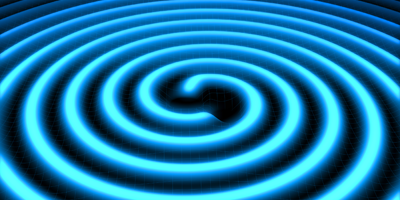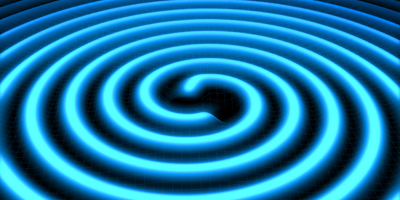Sailing Choppy Gravitational Seas
Massive astrophysical objects are believed to produce ripples in spacetime called gravitational waves. Proposed or ongoing experiments offer the chance to detect these gravitational waves and use them to study the behavior of the objects that create them. In Physical Review Letters, Chiara Mingarelli of the University of Birmingham, UK, and colleagues analyze the potential and limitations of using data from groups of pulsars for this kind of research.
Pulsars are rotating neutron stars emitting beams of radiation that we see as highly regular radio pulses, much as lighthouses sweep the horizon with warning signals. These pulses will arrive at a detector at intervals that vary because of passing gravitational waves. Like ships sailing across rough seas, the pulses have to travel different distances to the detector, depending on how many peaks and valleys appear along their paths. Collating the arrival times of various ships (or pulsar signals) as they arrive at one port (or detector) forms a picture of the ocean topography.
Mingarelli et al. calculate scenarios for gravitational waves produced by pairs of supermassive black holes orbiting each other. The authors show that much could be learned about black hole masses and spins once future high-sensitivity detectors, combined with knowledge of pulsar distances, allow comparing pulse timing at the earth and at the pulsar. These calculations suggest a plan for how experimental detection of gravitational waves might shed light on the details of black hole formation and evolution. – David Voss





